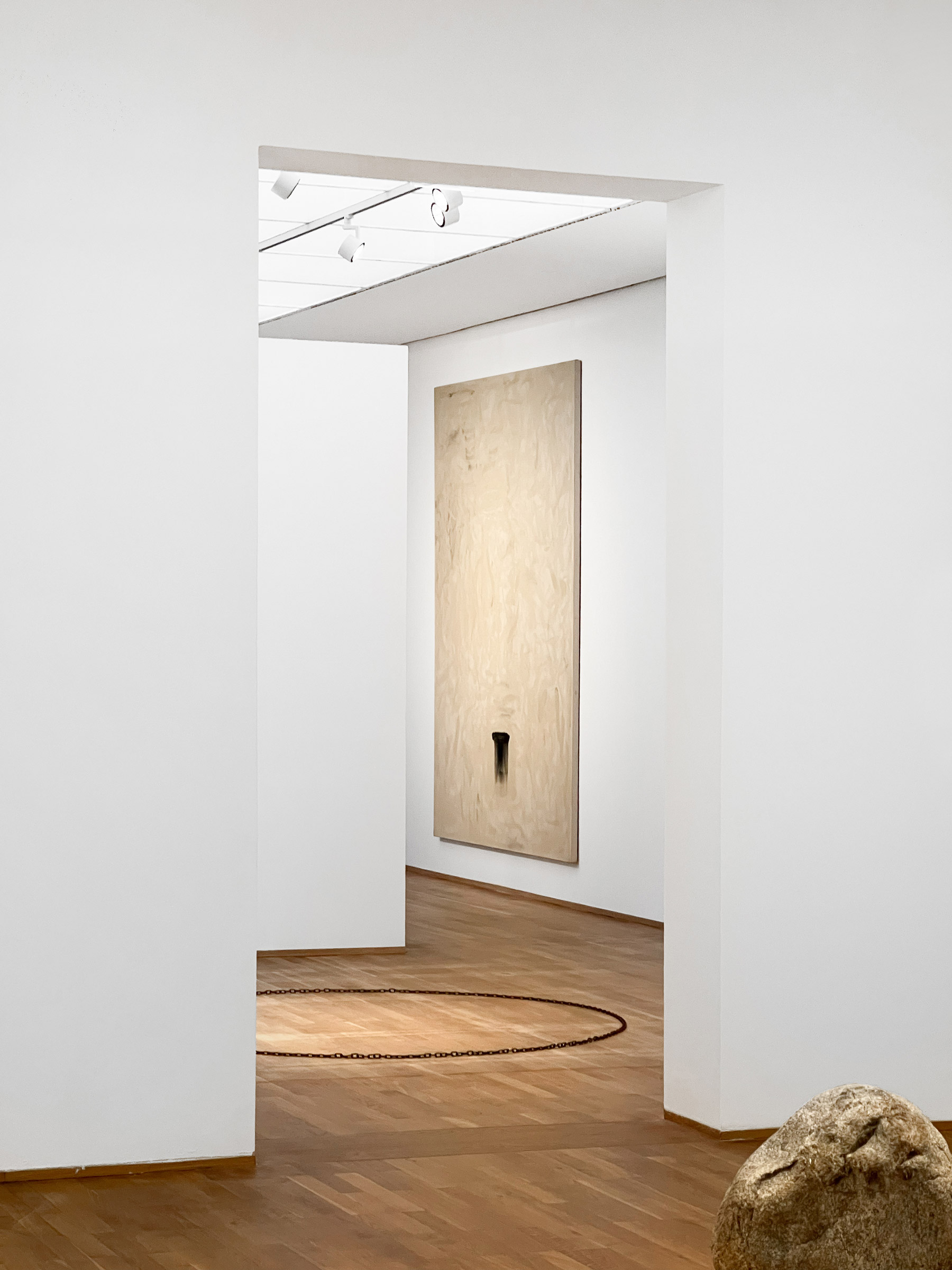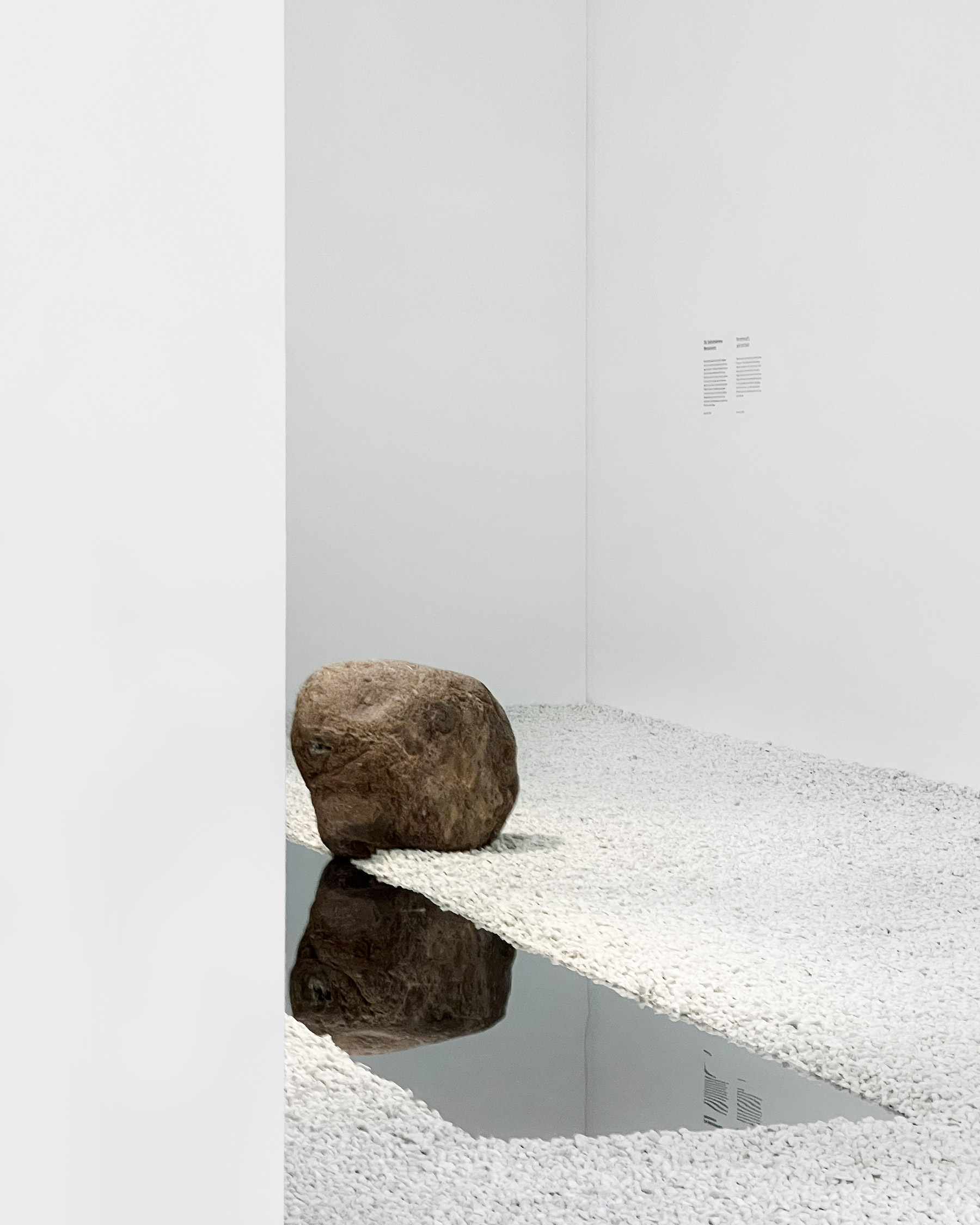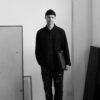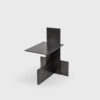It was a typical rainy autumn day in Berlin when I arrived at Hamburger Bahnhof for Lee Ufan’s Press Preview. Despite the uncomfortable weather conditions, my anticipation was high for the first retrospective of the artist and philosopher in Germany.
After all, the exhibition is a significant insight into the life’s work of an artist whose influences have made decisive contributions to the art world. Lee is one of the most important representatives of the Mono-ha school in Japan. He is also a significant figure in the Dansaekhwa movement in Korea, which developed parallel to other minimalist art movements. The exhibition, curated by Sam Bardaouil and Till Fellrath, includes about 60 works from six decades of his oeuvre.
Lee’s art – characterized by the use of simple natural objects such as stone, wood, iron, and glass – is an expression of his deeply felt connection to nature and spirituality. At the same time, his sculptures and also his paintings are always characterized by a minimalist aesthetic.
But what does minimalism mean to Lee Ufan himself? When I had the opportunity to ask him during the press conference, what he thinks of his works being described as minimalist, he explained that he finds the term “minimalism,” as it is often used today, too narrow. For him, it’s not just about showing things “as they are,” but also “as they are not.” For him, it’s about the relationships between the objects, the emptiness and the space in between – and not just in the physical sense, but also in the philosophical and spiritual sense.
A philosophical discourse with art
This deep philosophical grounding is indeed present in his work. After his art studies, the now 87-year-old Lee moved from Korea to Japan in 1956 and studied East Asian and European philosophy. Particularly the Japanese concept “Ma” (間), which symbolizes emptiness and moments of pause, is a central idea in his work. This emptiness is particularly visible in the displayed series “Dialogue”, “Response” or “Correspondence”. The center of the canvas often remains empty, with only isolated brush strokes or color gradients found here.


In the late 1960s, Lee gained international prominence as a key figure in the Mono-ha movement (literally, “school of things”). This was Japan’s first significant contemporary art movement that rejected Western notions of art and representation. Artists such as Nobuo Sekine and Kishio Suga placed great emphasis on material, perception, and the interaction between space and matter. Instead of creating new works of art, they focused on using existing materials from nature, such as stones and branches, and combining them with industrial materials such as glass or steel.
One of Lee’s early key works, “Relatum” from 1968, in which he drops a stone onto a glass plate, makes this special relationship between space, object, and perception noticeable. For the retrospective at Hamburger Bahnhof, he repeated this act of deliberate dropping.
Painting as a ritual, meditative practice
In the 1970s Lee returned to painting and became a leading figure in the Dansaekhwa movement in Korea. Dansaekhwa, which translates as “monochrome painting,” emerged during the political turmoil in South Korea. The works of that loose group of painters, which included the recently deceased Park Seo Bo, convey calm and peace despite the surrounding chaos of that time. The focus was on the act of repetition and the process of painting. Lee Ufan’s series “From Point” and “From Line” which are also on display, illustrate this ritual, almost meditative practice.
The painting “With Winds” from 1990 particularly impressed me personally (see image above). In this work, Lee attempts to represent the movements of the wind through gentle brush strokes. The beige-colored strokes, which give depth to the large-format painting, are interrupted by a dark, initially strong, and then ever softer, broad brush stroke in the lower third of the canvas. This brushstroke grounds the composition, giving it calm and balance in the otherwise dynamic representation.
It’s not just a reduction to things, but it’s about relation, it’s about the space that opens up, the emptiness and other things.
Lee Ufan
In dialogue with Rembrandt
Communicated as a “highlight” of the exhibition is the artist’s intervention between Lee’s work and a self-portrait by Rembrandt (see image above). Lee Ufan has been a great admirer of Rembrandt for many decades. The “Self-portrait with Velvet Barett” from 1634, which was borrowed from the Berlin Gemäldegalerie for this retrospective, is in context with Lee’s installation “Relatum – The Narrow Sky Road.”
White gravel covers the installation’s room and a narrow, four-meter-long path of polished steel directs the visitors’ eyes directly to Rembrandt’s work. Two natural stones flank the painting. However, I must confess, that Rembrandt’s painting seems out of place amid the otherwise impressive and coherent exhibition.
Overall, the retrospective is an enrichment for Berlin and exceeds my expectations with a deep, subtle beauty that reveals itself in each work. The way Lee Ufan combines materials, creating a connection between space and matter, shows his deep philosophical engagement. It is a must-see exhibition, not only for those who love minimalist aesthetics but for all those, who seek a profound and enriching dialogue with art.
The retrospective of Lee Ufan is on view from 27 October 2023 to 28 April 2024 at Hamburger Bahnhof. To accompany the exhibition, a publication has been published that provides an insight into the work of the Korean artist.


